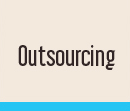
Quality is our top priority
Oceannet Software always pursues the highest quality, not only in its software products, but also in its processes, infrastructure, and employees. Nothing goes overlook. We document, implement, and evaluate all of our internal processes, because we are always looking for opportunities to improve and become more efficient. We are guided by detailed principles for quality control and management that cover every stage of the product lifecycle, from initial planning through maintenance. Our procedures minimize software errors by periodically collecting measurable data and checking it against our database before they are rolled into a demanding audit and review for quality. No matter how much time pressure we are under, we will never cut quality, which is viewed not only as the end, but also as the means.
We assure high quality through a multi-step program that includes each of the following components:
- A relentless focus on customer satisfaction
- Analysis of systems
- Certification
- Randomized testing
- Regression-based testing
- Stress testing
- Verification of the functionality
- Verification of the parameter range
- Verification of the user interface
- Verification suite generation
Our clients are our top priority for everyone here at Oceannet Software. We seek continuous improvements that will allow us to better meet our clients' needs. We measure our success by your satisfaction with our products services. We strive to maximize your ROI (return on investment) by providing business solutions that are always dependable and far superior to anything else in the marketplace. We do this by adhering to measurable, rigorous quality standards and internal processes and procedures. Furthermore, we benchmark our practices, products, and processes against industry standards, making sure that our company is truly the best of the best, providing outstanding value for our clients.
We thoroughly understand the needs, challenges, and concerns of companies working in software development and ecommerce. This allows us to consistently provide high-value business solutions and services of superior quality that speak directly to our clients' needs. We assist our clients in their risk mitigation by seeking any errors, bugs, or bottlenecks throughout the product lifecycle. The earlier those types of problems are identified, the easier and cheaper it is to fix them. Oceannet Software's development team use the industry's best testing tools for our quality assurance practices. We also work to minimize the costs of maintenance and modifications in the future by making sure that our applications are easy to maintain, reliable, and scalable.
Our extensive line of services includes the development of web applications and desktop software localization, and IT engineering.
Background
Software and web applications are increasingly important for businesses around the world, and as they increase in complexity and sophistication, so do the programming languages and techniques that they are created with. At the same time, companies are demanding delivery within ever-shorter timeframe in order to remain competitive in a rapidly changing marketplace. These challenges are multiplied when developing web applications that must be designed for multiple simultaneous users from distant locations. Software development has a high failure rate, but this can be controlled through frequently, early testing, careful communication, and adherence to proven methodologies, procedures, and processes.
Oceannet Software specializes in producing high-quality applications in record time for a surprisingly low cost. We can do this because of our extensive testing procedures that ensure that our final products are easy to maintain, dependable, and scalable. Furthermore, we combine expertise in testing with expertise in web domains, maximizing the effectiveness of our quality assurance and web-testing procedures. We test our products in controlled test environments, using both automatic and manual tests. We create customized tools as needed in order to meet our clients' requirements.
Service Offerings
Our web testing services run the gamut, from security and performance to functionality, usability, and configurations. We are experienced testers for n-tier applications for the web that are dependent on many server- and client-side technologies, such as Oracle 8.0, SQL Server 2K, MTS, MS IIS, and more. Furthermore, our project experience covers a diverse array of domains and industries. Our clients see solutions for supply chain management, travel, auctions, collaborative software, data management, and more.
Testing for Functionality
Testing for functionality means determining whether the application that we have developed meets all of our clients' technical specifications. We conduct a thorough review of all links, actions that are affected by the choice of internet browser, session handling, business rules, user actions that may be invalid of valid, data, security, and more. These reviews are complemented with automatic and manual testing as needed.
Testing for Compatibility
Testing for compatibility requires determining whether the application that we have developed functions in the same way, regardless of which browser, browser version, plug-ins, platform, and connection type the end user is using to access the application. Again, we use automatic and manual testing as needed.
Testing for Load and Performance
Testing for Load and Performance means determining whether the application that we have developed functions optimally under the varying anticipated levels of usage (load) and stress. We create user scenarios for the testing environment by considering each of the following:
- How does the application perform under the anticipate traffic patterns, connection speeds, and paged views?
- What kind of response time will the application have when a particular large number of users are active at once?
- How many users can the application handle at one time without negatively affecting performance?
- Where and when are performance bottlenecks most likely to occur?
- How much of the server-side resources are being used by the application to handle any particular load?
- At what point in stressful conditions will the application fail?
Testing for Usability
Testing for usability means determining whether the end users are comfortable using the application that we have developed. Do they understand how all the different parts of the application fit together? Can they navigate the application easily? Does the application appear to be consistent and does it contain clear, appropriate messaging?
Testing for Security
Testing for security in the applications that we have development occurs on many levels through extensive testing. Our security testing procedure involves the following steps:
- To comprehend and evaluate the full product specifications and requirements of the end users
- To develop a project-specific plan for quality assurance
- To develop a testing plan that is grounded in functionality or users as appropriate for the project
- To design the test
- To gather data from the tests
- To set up the test bed per the project's specific requirements
- To automate the test if that is appropriate for the project
- To create the installation if we are using a test bed
- To develop an environment for testing that simulates how the application will actually be used by the client and end users
- To conduct the tests
- To analyze the results
- To identify any defects, errors, or bugs
- To manage the application testing through the use of regression
More specifically, our quality-assurance testing takes the following forms:
- Testing of the graphic user interface (GUI)
- Testing of the functionality of the application itself and as it will be integrated with other programs and applications
- Testing of the configuration
- Testing of the performance
- Testing of the usability
- Beta testing
- Development of customized tools for testing
- Testing for migration
- Testing for installation and implementation
- The creation and ongoing maintenance of a suite for test automation
How Oceannet Software Succeeds
Oceannet Software succeeds because it has the best, most experienced, and most knowledgeable IT professionals on its team. They specialize in quality assurance and know how to conduct a system-wide analysis that goes far beyond what many other companies offer. Our best developers pride themselves on identifying where the system is weakest and then addressing those weaknesses.
Our Methodology
We use a variety of techniques to make sure that the applications we develop are functioning optimally. Here are descriptions of the most common ones.
- Black Box – in this type of testing, the person conducting the test knows only the expected outputs, but has no knowledge about how the program actually works. The tester knows only the specifications and does not look at the underlying code. This simple type of test is attractive because it is completely unbiased (the tester and developer are separate). Likewise, it is viewed through the perspective of an end user. Black-box testing can occur immediately after the product specifications are finished.
- White Box – In white-box testing, the tester is highly skilled and is familiar with the program's functionality and the underlying code.
- Performance (including benchmarks and profiles) – Performance testing is more complicated, pointing to how well the application meets the specifications and identifying bottlenecks and needed improvements.
- Configuration (browsers, operating systems, and platforms) – At Oceannet Software, we can test our applications for configurations on any platform, such as MacOS, UNIX, or Microsoft Windows.
- Stress – In stress testing, the application is observed under varying levels of stress and usage (load).
- Automated – Under some circumstances, computers can test the software more accurately, thoroughly, and rapidly than humans alone, helping to keep costs down.
Oceannet Software's services for quality assurance include, but are not limited to, the following:
- Reporting problems
- Testing for functionality, performance, volume, and stress
- Creation of test beds
- Creation of scripts for automated testing
- Creation of test cases
- Planning for tests
- Reviewing and walking through the designs
Our quality assurance and maintenance services are not only product-specific, but also a motivation for continuous improvement. Our testing practices work because we carefully develop and document our procedures, cases, plans, strategies, objectives, and processes. When we produce test cases, we do so by breaking down the specifications into their smallest functional components. We evaluate each project through the use of inspections, technical reviews, desk checking, formal reviews, and walkthroughs. Our analysts focus on usability by evaluating the software's overall design, navigation, architecture, and functionality. We're able to do this within tight timeframes by having our teams work parallel to one another.
Our expertise in IT engineering lets us establish complex environments for testing on all platforms, including hybrid clusters that include both software and hardware. At the same time, we have extensive skills in creating customized programs for automated testing, as well as programming knowhow that we put to use when creating testing programs for the application's performance under stress. We always test our applications in the environment in which they will be used by our clients.





